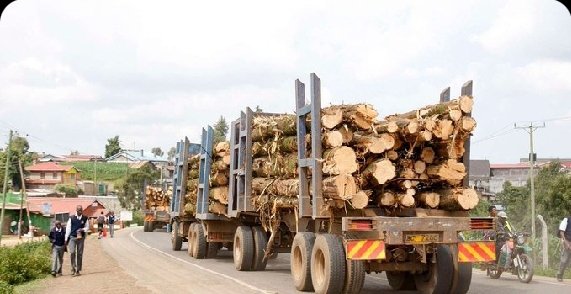A ban on logging in Kenya was lifted after six years by the Kenya Kwanza government effective July 1 2023. But experts are against the policy shift claiming it is detrimental to the efforts to reforest the country and fight against climate change.
President William Ruto is on record saying that mature trees were rotting in the forests and need to be harvested and new ones planted. However, environmentalists are against the idea saying that instead the government needs to fully implement the 2018 Forest Resources Management and Logging Activities in Kenya report.
The report was prepared by a task force following runaway illegal logging activities that had destroyed most of Kenya’s forests.
The founder of Green Africa Foundation Dr Isaac Kalua, who was a member of the task force and chair of the Kenya Water Agency at the time, is leading the voices petitioning the president to reconsider the decision.
According to Dr Kalua, the government needs to take decisions based on scientific processes noting that before the moratorium was put in place in 2018, rains had failed for three consecutive seasons, rivers were drying up, hence affecting water and food security.
The environmentalist said that Ruto, who was Deputy President at the time, formed the task force and embraced its recommendations promising to implement them fully.
Why logging is being reintroduced in Kenya
However, the Kenya Forestry Service (KFS) argued that the number of mature and over-mature trees in the forests is very high according to a 2020 – 2022 inventory.
KFS said forest plantations which make up six percent of the gazetted forests have trees with a rotation period of 25 – 30 years. If the trees are not harvested after that period they begin to rot.
The forest service also said that control measures had been put in place where access and actual harvesting of the trees would be monitored.
As such, any harvest would be required to present an entry certificate to forest managers before any timber left a forest. Exit certificates will then be issued to show that loggers had met all requirements. It is noteworthy that illegal logging, just like poaching, does not require a certificate and this may present an opportunity to corrupt activities.
KFS also said the process to issue licences through district forest conservators was automated, as well as that of payment of taxes. The annual maximum logging activities will be limited to 5,000 hectares with plans to replant every affected section.
However, Dr Kalua avers that rains in Kenya were still erratic and the country was losing 50,000 hectares of forest cover every year.
“On average, every Kenyan uses three fully grown 10 – 15 yr old trees every year in various ways including charcoal and furniture. Cumulatively, we cut and use 150 million trees yet produce and replant far less than that annually. To achieve one percent forest cover, there is need to plant 580 million trees annually. ” Dr Kalua.
President Ruto is leading a national campaign to achieve a forest cover of 30 percent by the year 2032 by planting a total of 4 billion trees. According to him, this campaign should not be an excuse to allow mature trees to rot when they can contribute to the growing of the economy and creation of hundreds of jobs.
Farmers in the timber business welcomed the move to remove the moratorium.




